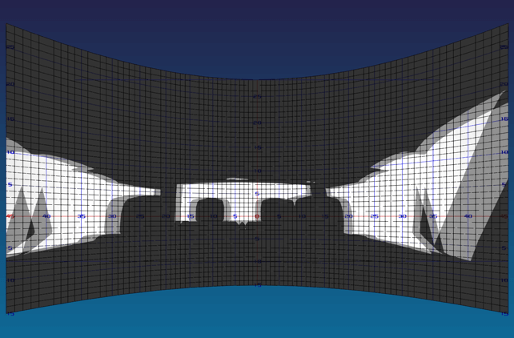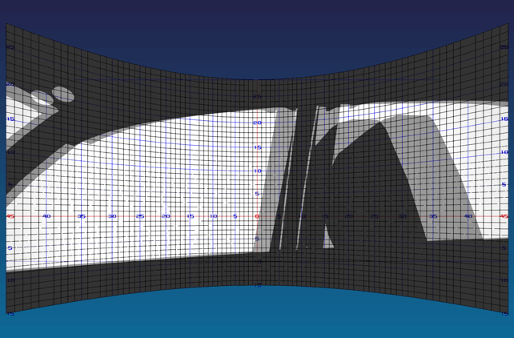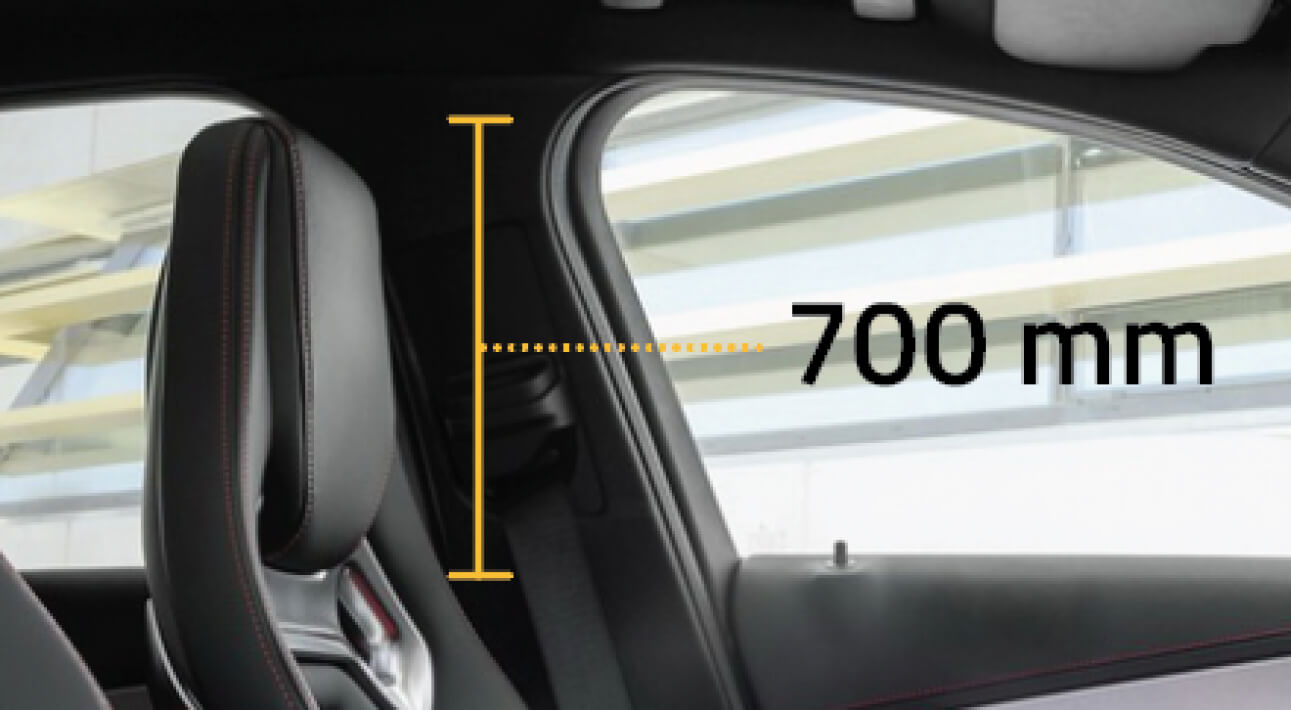The Problem
NHTSA proposed a 202a mandate to increase the size of head restraints to reduce whiplash insurance claims. In response to the NPRM, several manufacturers raised visibility concerns associated with mandatory rear head restraints in all vehicles.
While not a universal problem, we believe reduced visibility is a legitimate problem in some vehicles.
NHTSA 202a - There were some concerns expressed about the effect of taller front outboard head restraints on driver visibility through the backlight, and on the ability of drivers in following vehicles to see through the backlight of a vehicle in front of them. With respect to rear outboard seating positions, we believe that the rearward visibility concerns associated with wider rear head restraints outweigh an unquantified off-axis rear impact benefit of wider restraints in all seats at this time. The NPRM asked whether NHTSA should implement specific requirements for rear seat head restraints in order to alleviate problems associated with potential visibility losses.
In addition to cost effectiveness, our decision not to require rear head restraints was influenced by comments indicating that rear head restraints would significantly reduce a driver's view through the rear view mirror in some vehicles.
Although we are not able to estimate the associated adverse effects that might result from the rearward visibility losses, it is likely that the effect would not be safety neutral for some vehicles.
Because rearward visibility remains a concern, we note that the manufacturer will be able to determine whether providing a seat back structure above 200 mm would be consistent with the amount of rearward visibility they wish to provide. As discussed previously, the agency has made significant accommodations to mitigate possible visibility losses associated with rear head restraints.
The OEM, and others believed that rear head restraints should be an option because of rear seats' lower occupancy rates, occupancy of rear seats usually by shorter individuals, potential child seat interference with rear head restraints, and the potential reduction of direct and indirect rear vision. In supplemental comments, OEM stated its concern that rear seat head restraints will affect its ability to comply with the requirements of FMVSS No. 111, Rear View Mirrors.
Although we proposed mandatory rear head restraints in the NPRM, we have decided against requiring head restraints in rear outboard seating positions because a more refined estimate of the cost effectiveness expressed as cost per equivalent life saved no longer supported this requirement and because we were concerned about potential visibility issues and with potential loss of certain features currently available in some "multi-configuration" vehicles.


This set of visual comparison slides on three programs that were run on your Human Vision Analysis tool, along with actual obstruction percentage deltas, provided NHTSA with an eye-opening analysis of what their proposal would be doing to rear vision.
The Data
We went through an intense exercise which culminated in a presentation to NHTSA at the Department of Transportation in Washington, D.C. The visit to Washington was our attempt to convey to NHTSA, one last time, some of the technical issues surrounding their proposed enhancements of the FMVSS 202 head restraint regulations. One of the key facets of our presentation was the product of innovation and work in regards to the impacts on driver's vision.
Most notably increased rear vision obstruction attributed to the proposed larger rear head restraints.
We have known, subjectively, that NHTSA's proposal would have a significant impact on rear vision, but until the advent of your group's vision tool, that impact had been difficult to quantify, and to analyze in math. The Human Vision Analysis method used real surface math data of the seats and interior, resulted in a clear, objective study of current-day visibility conditions, compared with the impacts that the proposed head restraint enhancements would create.
It was apparent that this type of math-based, objective study had not been shared with them previously, and generated such a high level of interest on NHTSA's part, that they specifically requested a follow-up visit to the OEM to view the tool. Additionally, they requested that we submit our presentation in a Docket, to be part of the Federal Register on the topic.
Human Vision Analysis Benefits
The benefits this tool paid on that day were two-fold:
The tool made a “direct hit” on the technical argument we were attempting to make regarding rear vision; providing both a visual comparison, in real-time math data, as well as a quantifiable delta of vision obstruction percentages.
Less directly, the tool also added a valuable level of credibility to every other facet of our presentation to NHTSA. The message was clear to NHTSA: That the OEM has done their homework on the entire subject.
The Recommendations
The use of this tool needs to be mainstreamed into our existing processes.
- All appropriate vision audits should include the running of this study.
- OEM should oversee the Pre-VPI application on each program, to assist in the impact measurement of these proposed head restraint enhancements, and to weigh the cost vs. benefit of any "premium" alternatives that would help mitigate the vision obstruction, such as fold-down head restraint mechanisms.
- Post-VPI studies should be re-run by the Engineering teams when contemplating the styling and shaping of head restraints, and their effect on visibility.
The tool is in need, as you know, of being promoted to a standard work process.
The new version of the process only takes roughly 15 minutes to 1 hour per iteration.

15-60 Minutes Per Iteration
(24x efficiency gain)
If both these steps are accomplished, we can be assured that we are getting the most accurate, early assessment of visibility, and the effects that the head restraint enhancements may have on visibility for each program its applied to.
The Results
The claimed Human Vision Analysis (Ocular3D) method proved that there was significant degradation of visibility by increasing the size of head restraints.
The results delayed NHTSA Mandate 202a which allowed engineers the time to re-thing safety as it relates to head restraints and driver visibility. This event saved millions in relative cost avoidances and potential safety litigations that would have been root caused by this proposed mandate.


